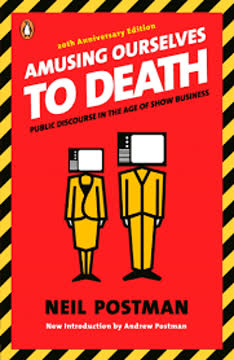Key Takeaways
1. Rhetoric's Core Pillars: Logos, Pathos, Ethos
Logos, pathos, and ethos are the three means open to you to influence your listener.
Three persuasive appeals. To effectively influence your audience, you must master the three classical appeals: Logos (rational speech), Pathos (proportionate emotion), and Ethos (credible character). These elements work in concert, forming the foundation of persuasive communication, whether in writing or speaking.
Clarity is paramount. Logos, or articulate speech, is your primary obligation because without clarity, your audience cannot even begin to understand or engage with your message. It ensures that your arguments are logical, well-structured, and easy to follow, preventing misunderstandings that can derail your persuasive efforts.
Beyond mere words. While Logos provides the intellectual backbone, Pathos connects with the audience's emotions, making your message resonate on a deeper level. Ethos, rooted in your character and credibility, builds trust, making your audience more receptive to your arguments. A balanced application of all three is essential for true rhetorical power.
2. Mastering Rational Speech: Clarity Through Grammar and Logic
Reasonable speech begins with right grammar.
Grammar builds credibility. Disrespecting grammar immediately undermines your credibility and can lead to confusion, as illustrated by the "Nobody" example from Alice in Wonderland. Mastering syntax, punctuation, and word choice ensures your message is understood precisely, allowing for meaningful engagement, even disagreement.
Three precepts for precision. To enhance clarity and conciseness, always:
- Omit needless words: Streamline phrases (e.g., "owing to the fact that" becomes "since").
- Use the active voice: Make your writing direct and authoritative (e.g., "He was hit by the ball" becomes "The ball hit him").
- Employ parallel structure: Express similar ideas in similar forms for pleasing rhythm and clarity (e.g., "a time to be born, and a time to die").
Logic underpins truth. Beyond grammar, a basic understanding of logic—the three acts of the mind (understanding terms, judging propositions, reasoning with syllogisms)—is crucial. This framework helps you construct sound arguments and identify common fallacies, ensuring your reasoning is robust and persuasive.
3. Engaging Emotion Proportionately: Moving Head and Heart
You will delight and move your hearers when you bring your listeners’ emotions to match your own.
Emotions must align. Pathos is about aligning your emotions with your message and the occasion, a concept known as proportio. Just as a building's scale should suit its purpose, your emotional expression must match the event—yelling for a football coach, whispering for a eulogy—to avoid appearing out of place or insincere.
Balance intellect and feeling. Effective communication appeals to both the head and the heart. Speakers who focus solely on logic risk being ignored, while those overwhelmed by emotion can lose credibility. The goal is to convince your listener of what you think by first feeling what you say, but always with prudence and control.
Vivid, concrete language. To evoke appropriate emotions, use vivid and concrete language that "shows" rather than "tells." Instead of abstract terms, paint pictures with your words, preferring the particular to the general. This makes your message more memorable and emotionally resonant, allowing your audience to truly "see" and "feel" your point.
4. Building Credible Character: Your Virtues Speak Volumes
"Style," it has well been said, is "character embodied in speech."
Character earns conviction. Your character is the foundation of your persuasive power. People are more likely to believe you if they like you or at least don't find you "odious." The more you ask of your audience, the more they will demand of your character, making its cultivation paramount.
Cultivate cardinal virtues. Success in life and rhetoric hinges on four cardinal virtues:
- Wisdom: Applying right reason.
- Courage: Grit in the face of opposition.
- Moderation: Proportionate appetite and self-control.
- Justice: Harmony within oneself and in relations with others.
These virtues, developed through consistent practice, make you stronger and more authentic, directly impacting your credibility as a speaker.
Beyond words: body language. Your character is also conveyed through your appearance and body language. Dress with dignity as an act of courtesy, and learn to "speak with your body" through purposeful movements, facial expressions, and eye contact. These non-verbal cues communicate sincerity and confidence, reinforcing your verbal message.
5. Defining Your Purpose: To Teach, Please, or Move
To specify the end or objectives of the talk, consider these “pylons” or points of the triangle within which you must work: the authority you carry as speaker, the message within your general subject, as well as the expectations of your hearers.
Three immediate aims. Before organizing your thoughts, clarify your primary purpose: to teach (inform), to please (delight), or to move (incite action). Teaching is foundational, as understanding precedes agreement or action. Pleasing your audience, through pleasantness and brevity, earns their attention, while moving them requires direct, concise language and a clear call to action.
The communication triangle. Your rhetorical approach must align with the "communication triangle," considering:
- Speaker's Authority: Your role (teacher, politician, friend) influences the appropriate style.
- Message/Subject: The topic's nature (academic, practical, profound) dictates formality.
- Audience Expectations: Their mood, knowledge, and receptiveness shape your delivery.
This framework helps you choose the appropriate "style" of rhetoric—restrained, mixed, or grand—to match the context.
Match means to ends. Your "means" (techniques, emotional pitch, examples, logical appeals) must be tailored to your "ends." For instance, a presidential address on war demands a "grand style," while a casual chat among peers might use a "restrained style." Submitting your personal ambitions to the talk's purpose ensures you serve your audience effectively.
6. Structuring for Impact: The Essay as Your Blueprint
A good essay is like a good pair of glasses. It aims not to be seen, but to make clear.
The essay's clarity. The essay, a fundamental form of communication, provides a clear structure for organizing your thoughts, whether written or spoken. Its purpose is to make complex ideas clear, guiding the reader or listener through a single theme from introduction to conclusion.
The "hook, line, and sinker" introduction. A compelling introduction is vital to grab and retain attention. It comprises:
- The Hook: A surprising statistic, a pertinent question, an apt story, or a direct statement of value.
- The Line: A clear thesis statement or a statement of purpose, guiding the audience to your main point.
- The Sinker: An outline of what to expect, assuring the audience their time will be well spent.
This structured opening builds anticipation and trust, setting the stage for your argument.
Developing the body and conclusion. The body of your speech or essay develops your case, with each paragraph advancing a claim supported by evidence, examples, and reasoning (CERC: Claim, Example, Reason, Claim). Transitions are crucial to mark progress and prevent the audience from getting lost. The conclusion fulfills your initial promise, summarizing key points, amplifying implications, and making a final appeal, leaving a lasting impression.
7. Cultivating Eloquence: Harnessing Traditional Forms and Figures
Innovation proceeds from tradition. To speak well, with clarity, and with credibility, imitate the masters.
Learn from the giants. Just as Sir Isaac Newton stood on the "shoulders of giants," effective communication builds on established traditions. Imitate masters like Cicero, Churchill, or Newman to develop your rhetorical skills. Four traditional forms provide excellent frameworks:
- Pleasant Conversation (The Fireside): Q&A format, informal.
- Plain Style Speech (The Stroll): Direct, essay-like (Claim, Reason, Example, Claim).
- Classical Sermon (The Pitch): Formal, persuasive (Opening, Story, Argument, Conclusion).
- Scholastic Dispute (The Duel): Structured debate (Question, Objections, Authority, Reasons, Replies).
Vary your speech. To avoid boredom, vary your language and delivery. Erasmus's "Copia" demonstrates how to rephrase a simple sentence in numerous ways, adding color and texture. This practice enhances your vocabulary and stylistic flexibility, making your speech more engaging and memorable.
Deploy literary figures. Figures are "artfully varied" patterns of language used for effect, adding pleasure and impact. Examples include:
- Repetition: Anaphora (start), Epistrophe (end), Alliteration (sound).
- Structural Devices: Parallel structure, Antithesis (juxtaposition), Chiasmus (reversal).
- Dramatic Touches: Adage (proverb), Simile (comparison), Metaphor (compressed comparison).
Tactful use of these devices elevates your prose, making your ideas more noble and memorable.
8. The Art of Preparation: Write, Plan, and Adapt
When you begin as a speaker, write your speech in its entirety.
Preparation is authenticity. True authenticity in speaking is a "studied art," not spontaneous genius. Writing your speech in its entirety, especially when starting out, allows you to meticulously plan, refine formal devices, and ensure coherence. This "infinite pains" approach makes your delivery appear effortless and saves time in the long run.
Plan meticulously. Even for informal talks, detailed planning is crucial. J.K. Rowling emphasizes the importance of knowing your destination and working backward. This disciplined approach, though seemingly "dull," ensures your message is well-structured and impactful, preventing rambling or missed points.
Adapt to the unexpected. While preparation is key, be ready to adapt. Unexpected issues, like technical glitches or an unprepared interviewer, are common. Learn to salvage situations, whether by adjusting your content on the fly or by maintaining composure in the face of disruptions, turning potential disasters into opportunities for demonstrating resilience.
9. Flawless Delivery: Command the Room and Your Voice
Your voice, like your limbs, is like any other instrument. If you wish to play it well, you must play it often.
Disposition and presence. Before speaking, clarify your disposition by reviewing your aims and role. Arrive early to assess the room's layout, lighting, and sound, making adjustments as needed. Punctuality and attention to detail signal respect for your audience and the occasion.
Optimize the space. Physical proximity to your audience enhances connection. Minimize gaps between yourself and the first row, and encourage clustering if the room is too large for the crowd. This creates an intimate atmosphere, allowing your energy to flow more effectively and making your audience feel more engaged.
Master your instrument. Your voice is a powerful tool. Practice varying your tempo (slow to fast), pitch (high to low), and projection (soft to loud) to add emphasis and avoid monotony. Simple exercises, like singing scales and deep breathing, improve vocal control and endurance. Overcoming impediments, like Demosthenes's weak voice or Churchill's lisp, demonstrates that consistent practice, not native ability, leads to mastery.
10. Continuous Improvement: Review, Reflect, and Refine
Preparation for your next talk begins with review of this talk.
Learn from every experience. Just as a football coach reviews game tapes, you should review your presentations. Immediately after your talk, jot down notes on what went well and what could be improved. This self-assessment is crucial for continuous growth and refining your rhetorical skills.
Questions for reflection. Ask yourself:
- Did I achieve my intended aim (teach, please, move)?
- Did I accurately gauge and respond to the audience's mood and expectations?
- Did I avoid distracting verbal fillers?
- Did I maintain control of my emotions throughout?
- Did I anticipate and address potential questions or objections effectively?
Embrace setbacks. Not every talk will be perfect. Learn from "bad" experiences, like an unprepared radio interview or a disruptive audience. Cultivate prudence and self-possession. Whether through witty banter or a dignified retreat, your response to challenges can enhance your credibility and demonstrate professionalism.
11. The Ultimate Goal: Wed Truth to Beauty
The only difficulty was that though the universe had been disposed of, I myself was left over.
Beyond the rules. After mastering all the rules and techniques, the ultimate challenge is to integrate them authentically into your unique self. Rhetoric is not just about external performance; it's about embodying your character and convictions in speech. This requires continuous self-development and a balanced life.
Cultivate a productive routine. Whether you are a "romantic" who waits for inspiration or a "reliable" who sticks to a schedule, consistency is key. Regular, even short, practice sessions are more effective than sporadic, intense bursts. A balanced life, respecting sleep, play, and prayer, underpins productive and authentic communication.
Truth and beauty intertwined. The highest aim of rhetoric is to "wed truth to beauty." This means not only presenting logical arguments but doing so in a way that is aesthetically pleasing, morally compelling, and deeply resonant. When truth is adorned with beauty, it becomes irresistible, transforming not just minds, but hearts.
Last updated:
Review Summary
The Elements of Rhetoric receives mostly positive reviews for its concise, clear guidance on writing and speaking persuasively. Readers appreciate its practical advice, examples, and exercises. Many find it useful for improving public speaking, essay writing, and teaching. Some critics note its basic nature, suggesting it's more suitable for high school or college students. Overall, reviewers commend the book's accessibility and value as a reference guide, with particular praise for sections on emotions in communication, body language, and structuring arguments effectively.
Similar Books
Download PDF
Download EPUB
.epub digital book format is ideal for reading ebooks on phones, tablets, and e-readers.












